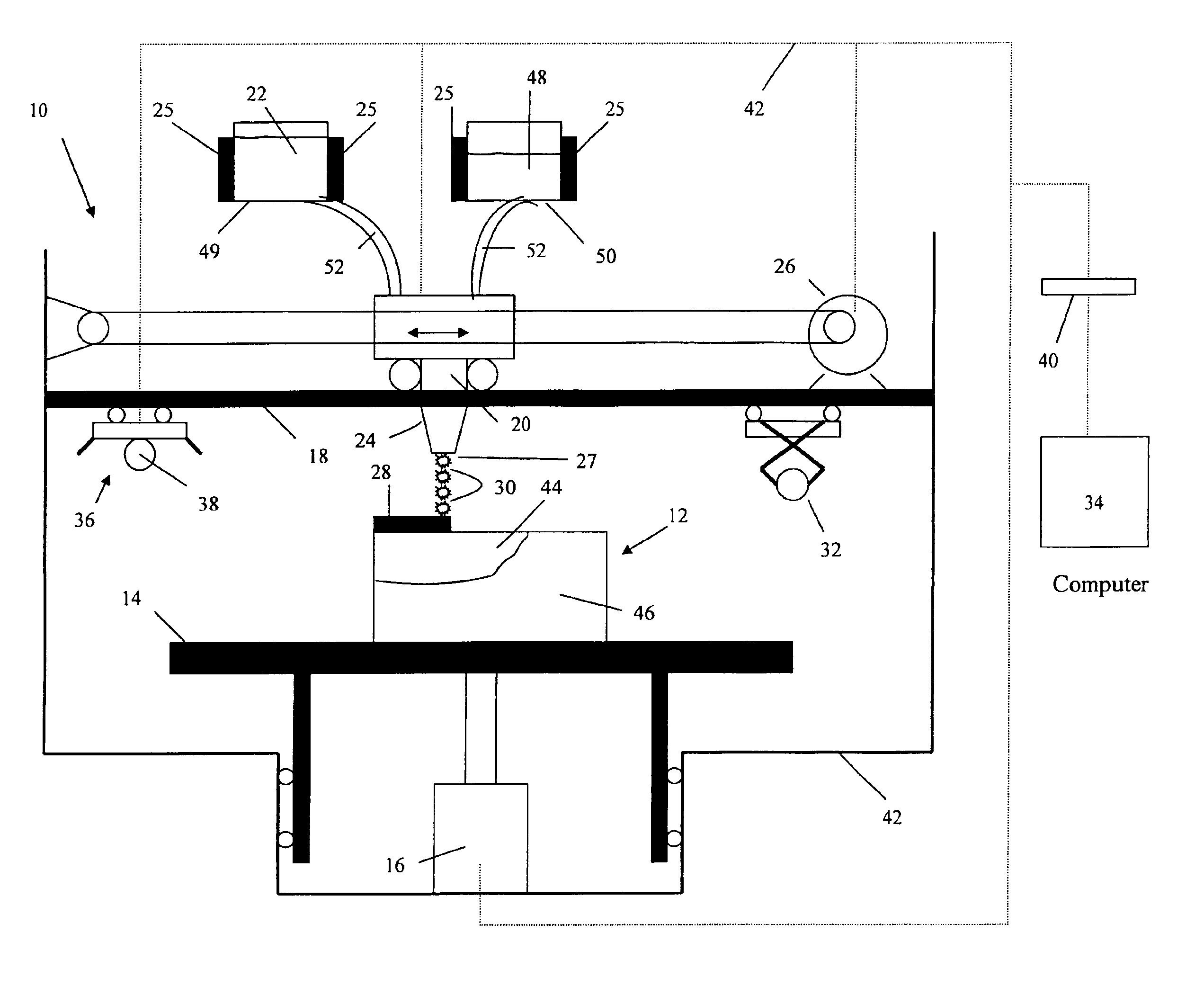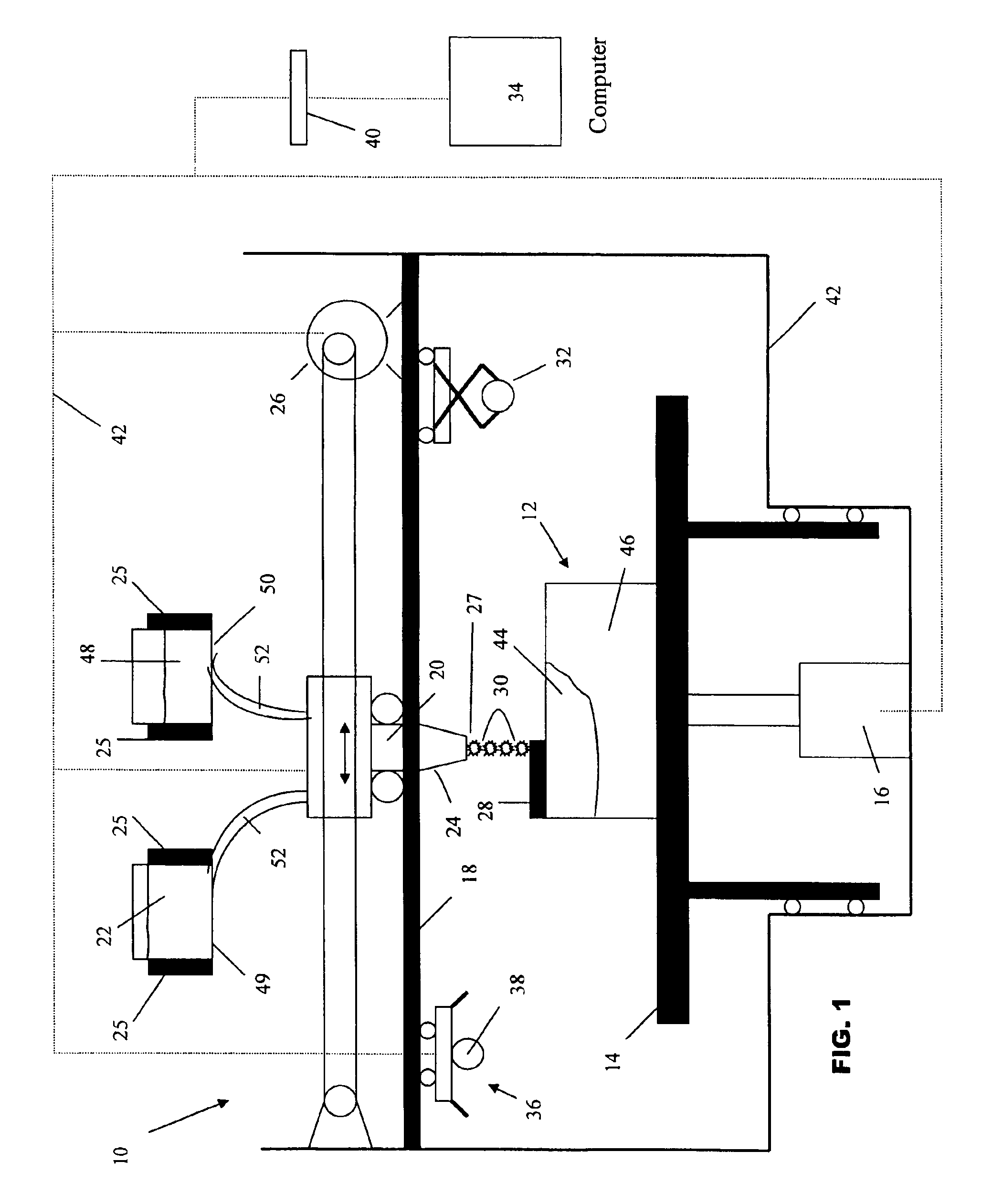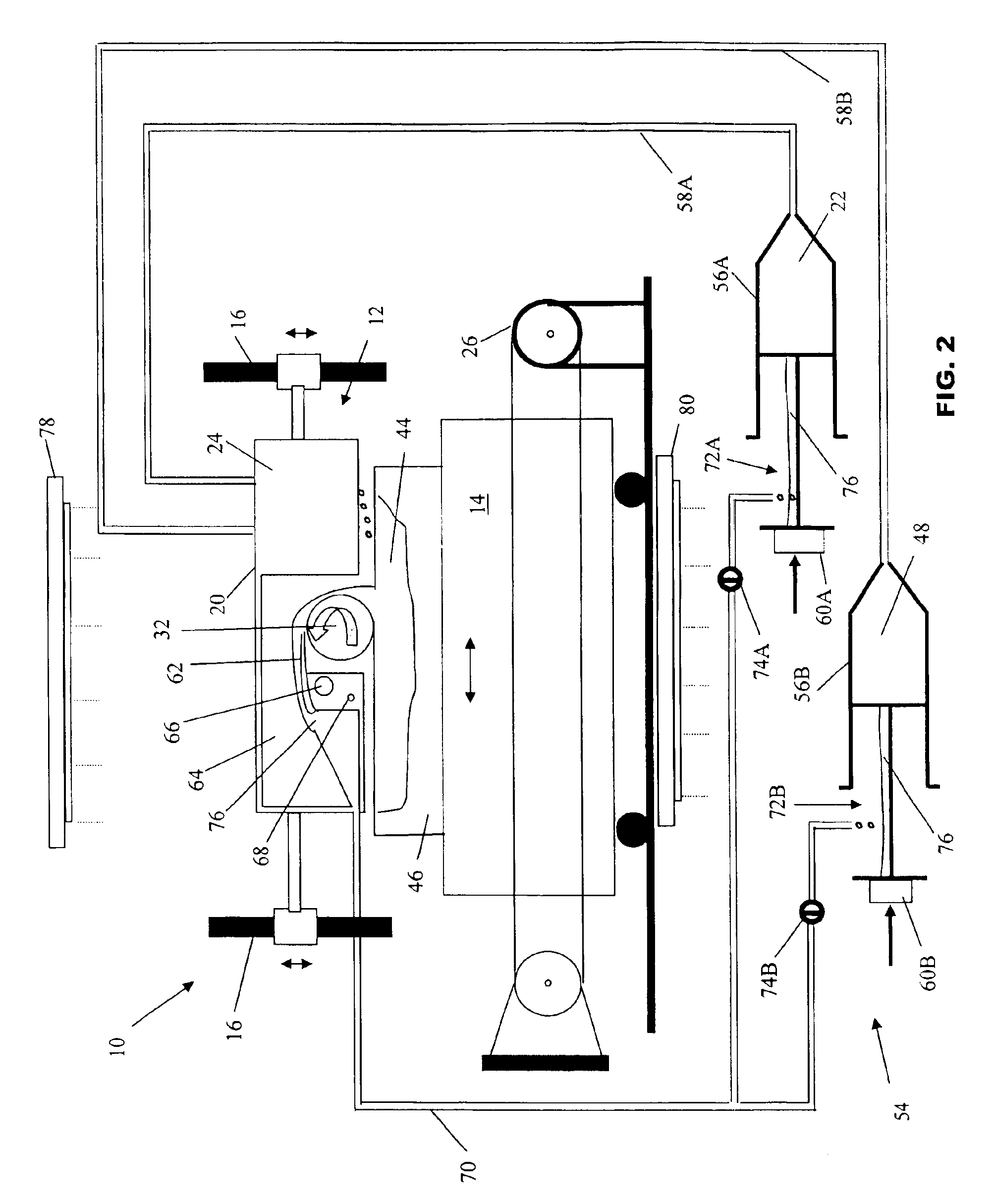Support volume calculation for a CAD model
a support volume and cad model technology, applied in the field of solid freeform fabrication, can solve the problems of unsatisfactory support function, unsatisfactory support function, unsolidified material not available to perform the desired support function, etc., to achieve rapid and accurate prediction, rapid and accurate prediction of the volume and weight of the support material, and rapid and accurate prediction
- Summary
- Abstract
- Description
- Claims
- Application Information
AI Technical Summary
Benefits of technology
Problems solved by technology
Method used
Image
Examples
Embodiment Construction
[0033]While the present invention is applicable to many SFF techniques the invention will be described with respect to a SDM technique utilizing an ink jet print head dispensing a ultraviolet radiation curable phase change material. However it is to be appreciated that the present invention can be implemented with any SFF technique utilizing a wide variety of materials. For example, the curable phase change material can be cured by exposure to actinic radiation having wavelengths other than in the ultraviolet band of the spectrum, or by subjecting the material to thermal heat. Or the curing may be affected by a selective exposure from a laser beam, as in stereolithography. Alternately the build material may not be a curable material but a material which changes phase due to temperature, being deposited in a molten state, and quickly hardening due to cooling.
[0034]Referring particularly to FIG. 1 there is illustrated generally by the numeral 10 a SDM apparatus for practicing an embod...
PUM
| Property | Measurement | Unit |
|---|---|---|
| Length | aaaaa | aaaaa |
| Length | aaaaa | aaaaa |
| Length | aaaaa | aaaaa |
Abstract
Description
Claims
Application Information
 Login to View More
Login to View More - R&D
- Intellectual Property
- Life Sciences
- Materials
- Tech Scout
- Unparalleled Data Quality
- Higher Quality Content
- 60% Fewer Hallucinations
Browse by: Latest US Patents, China's latest patents, Technical Efficacy Thesaurus, Application Domain, Technology Topic, Popular Technical Reports.
© 2025 PatSnap. All rights reserved.Legal|Privacy policy|Modern Slavery Act Transparency Statement|Sitemap|About US| Contact US: help@patsnap.com



